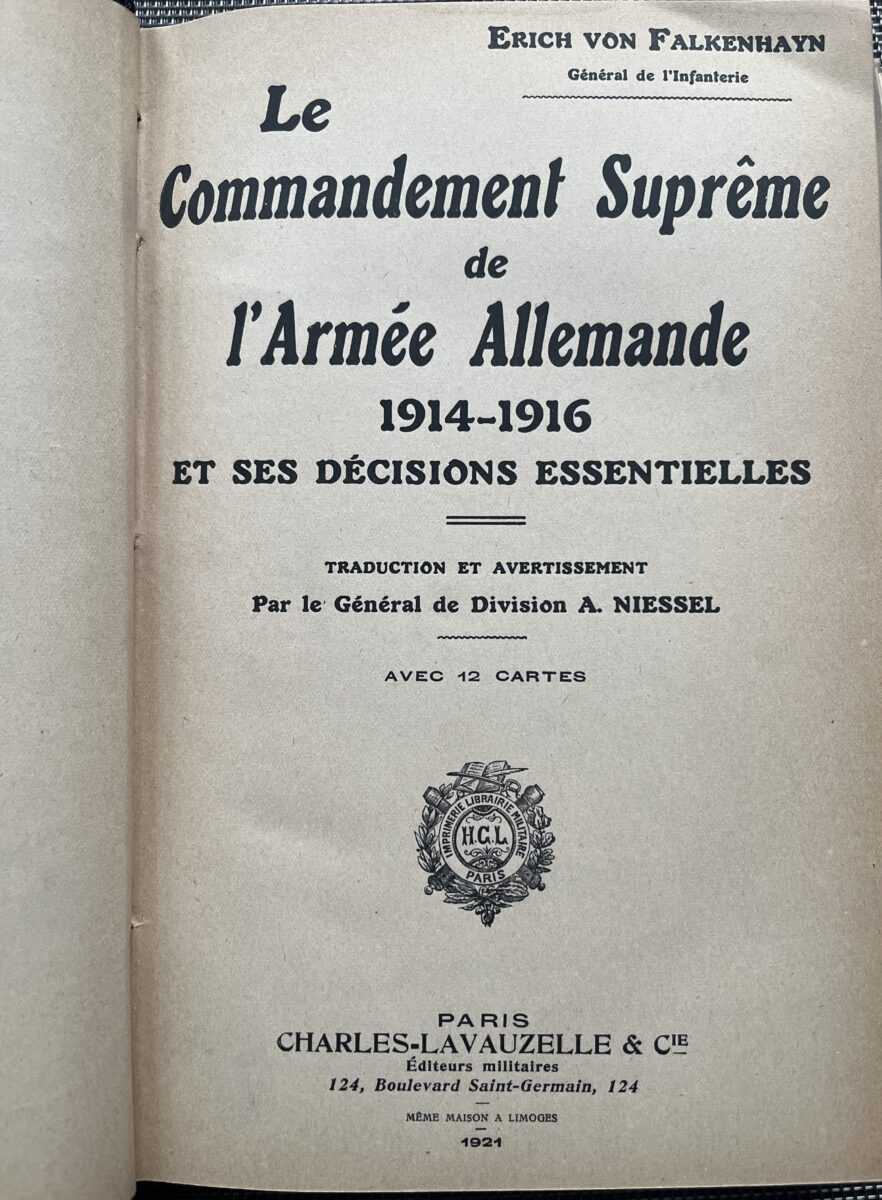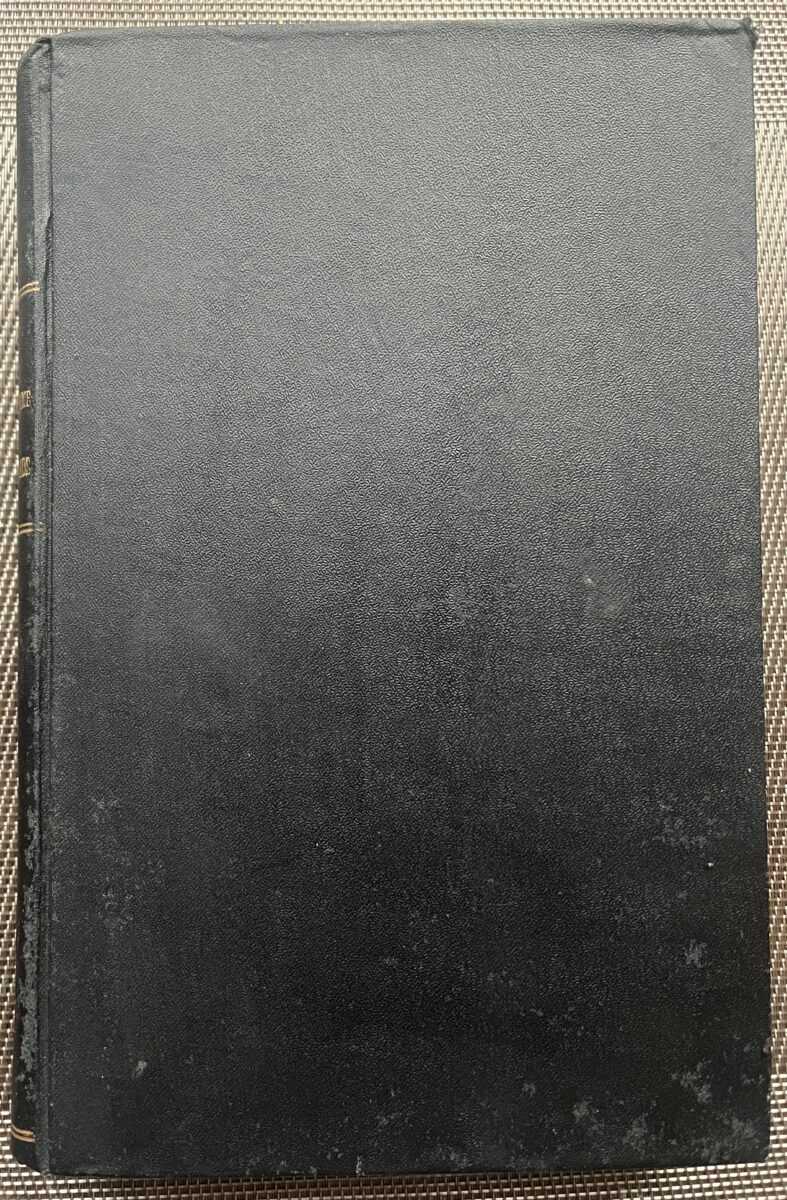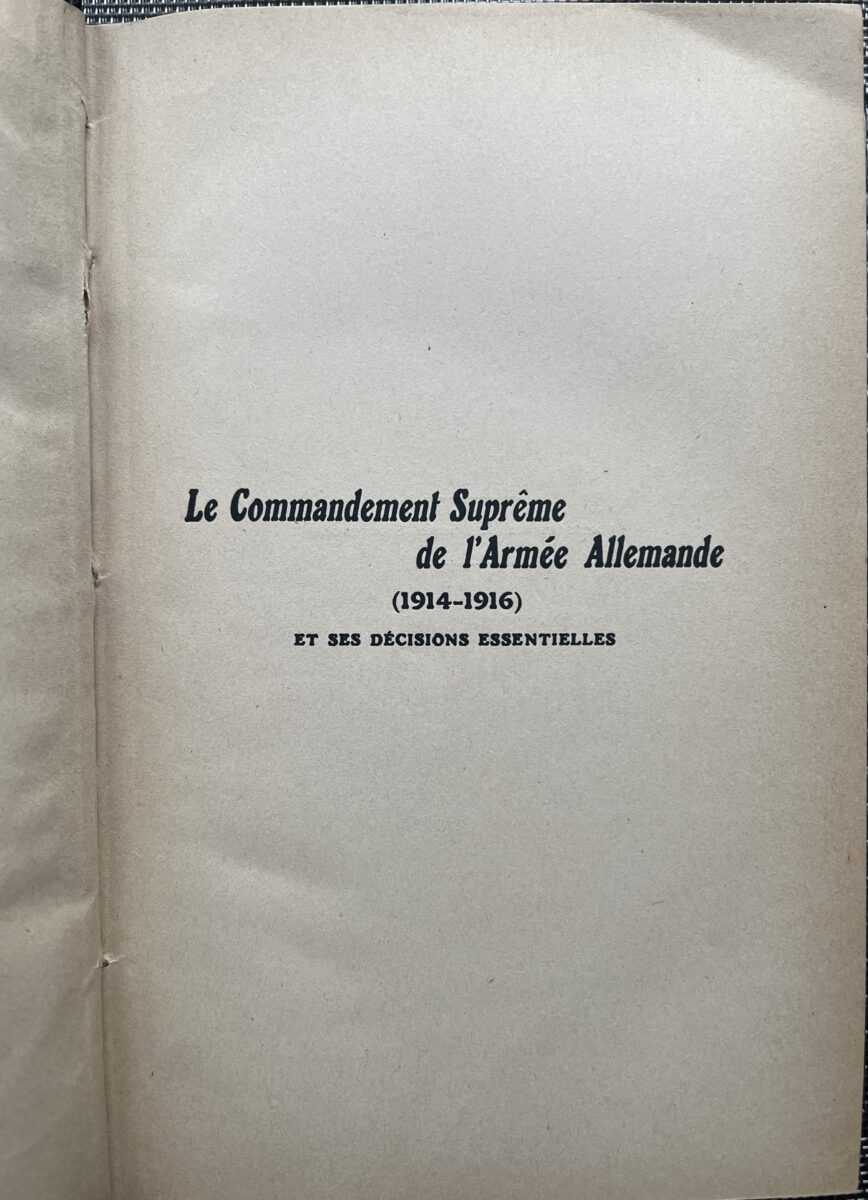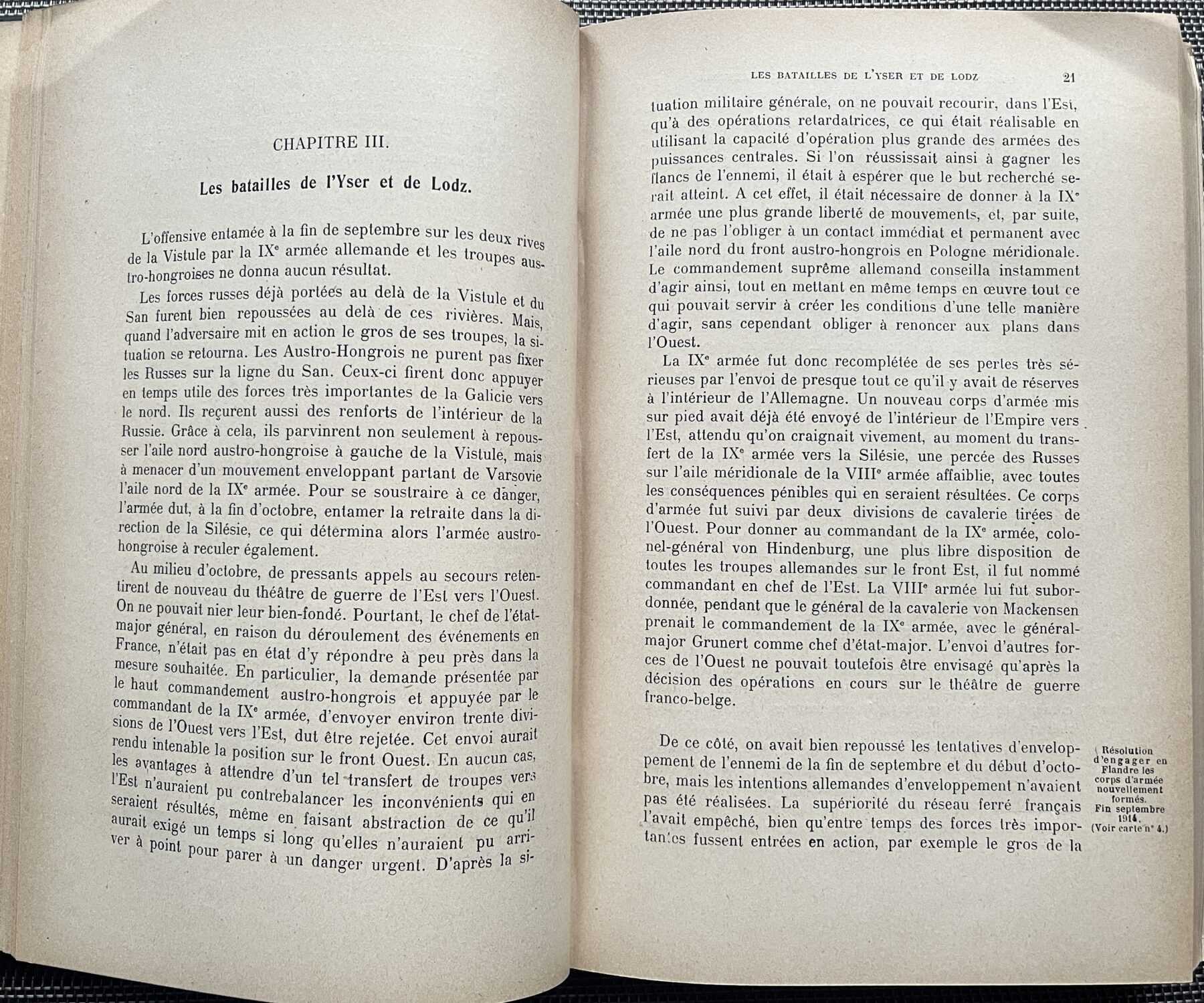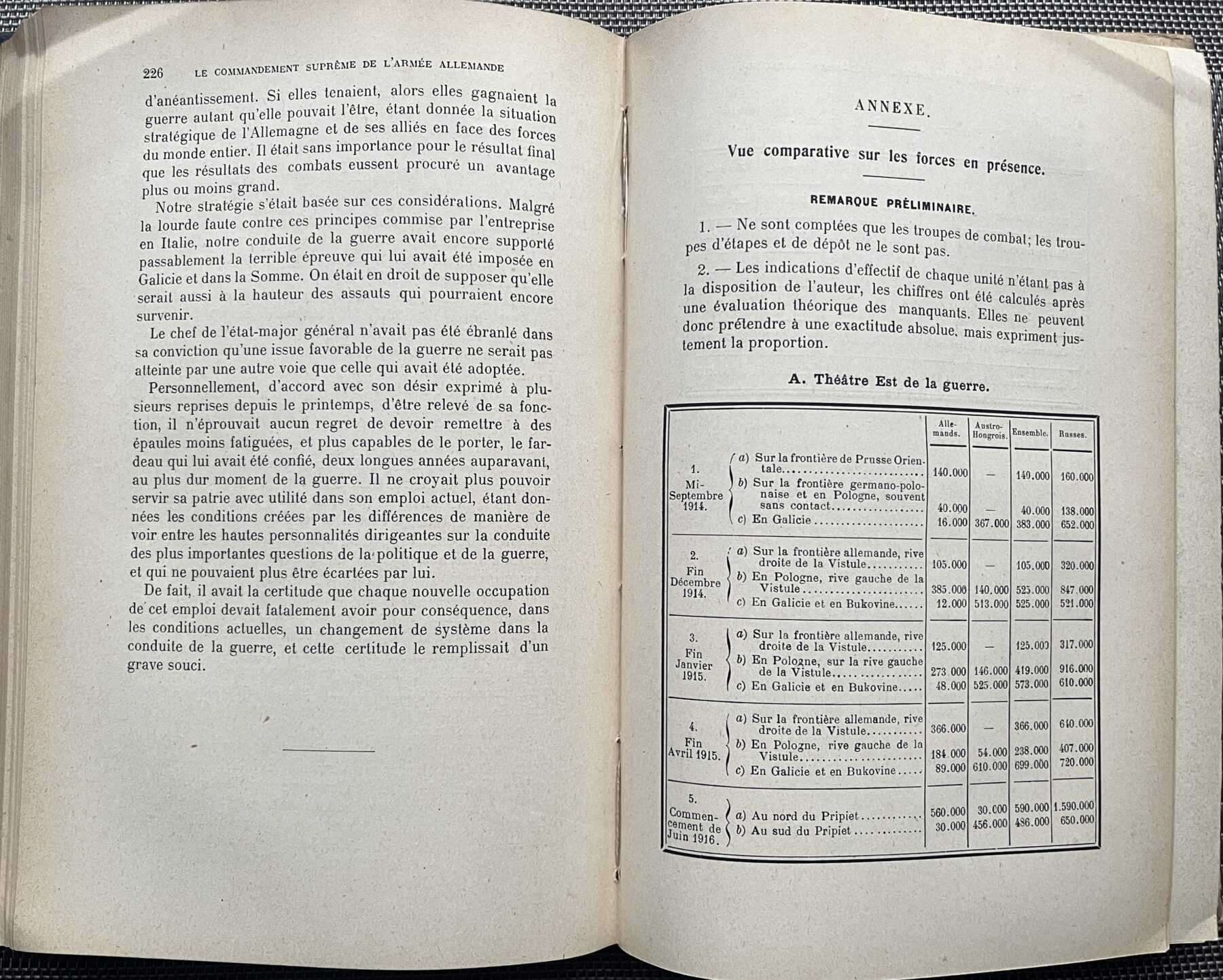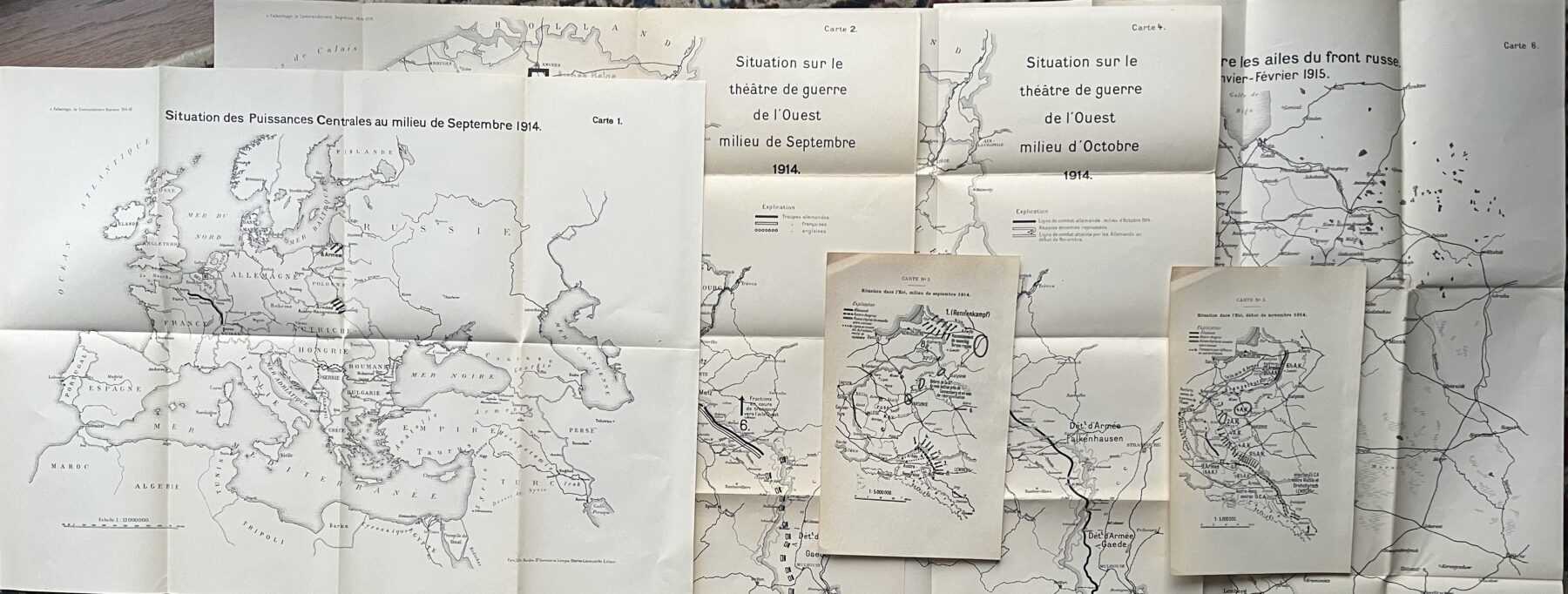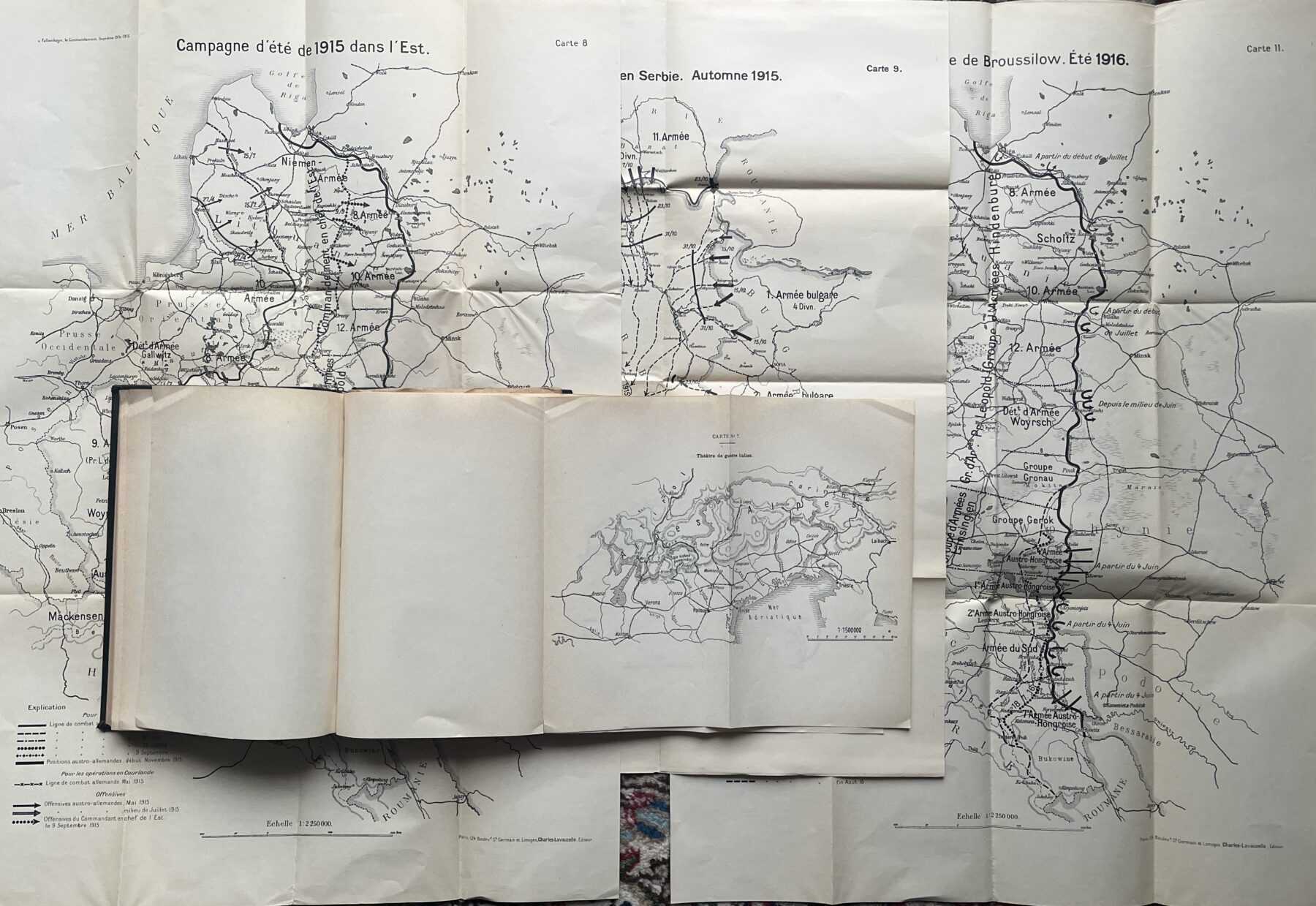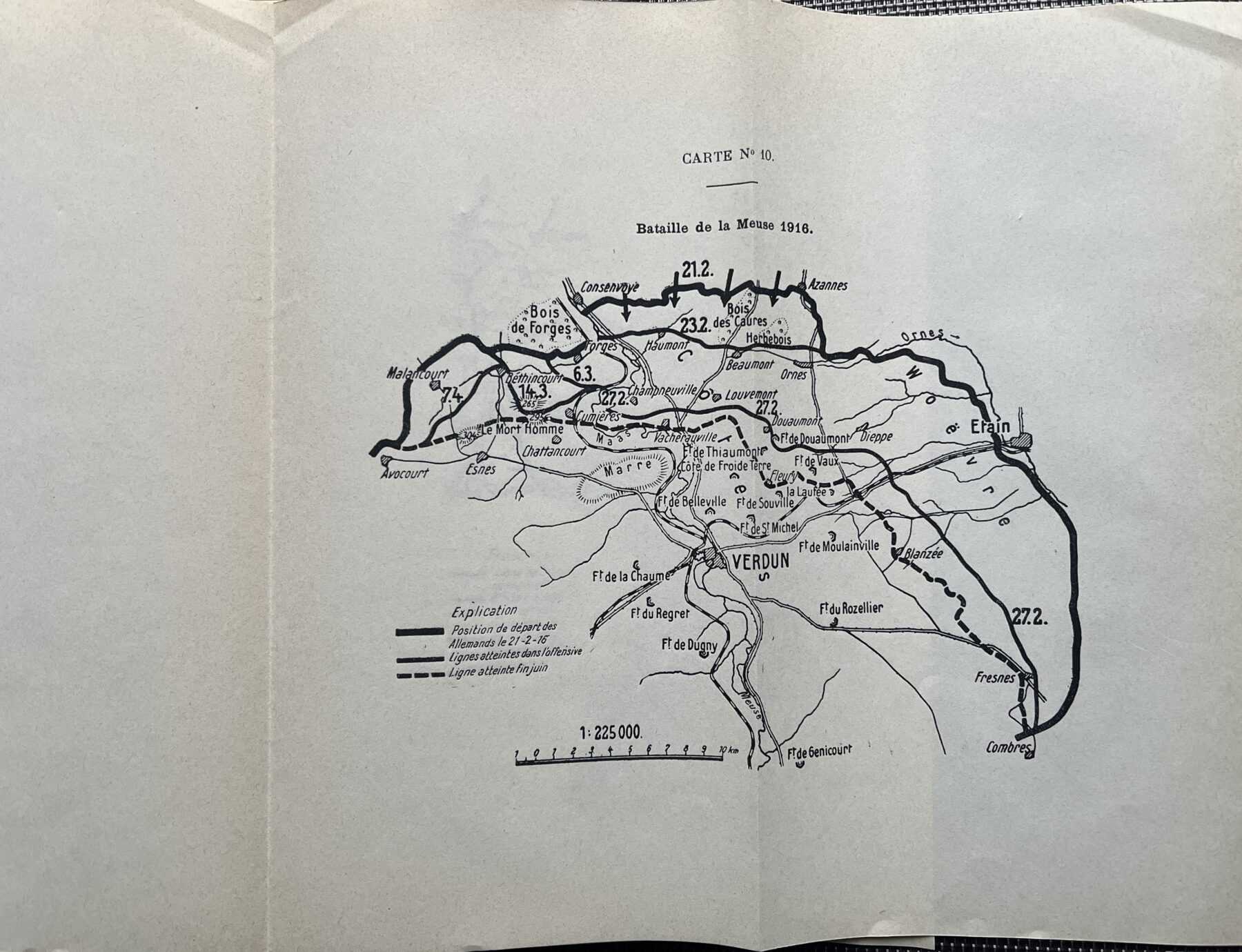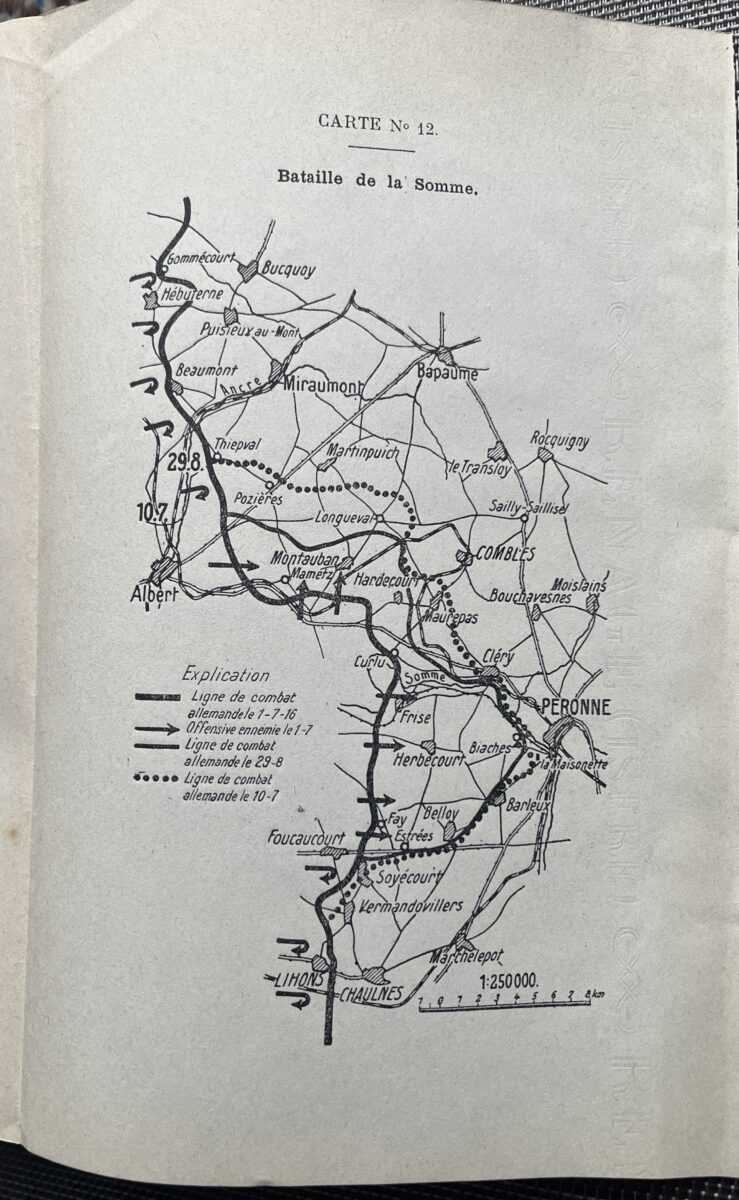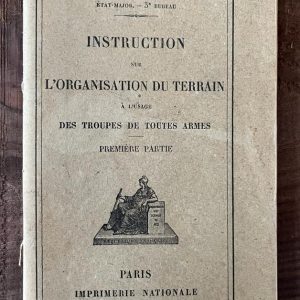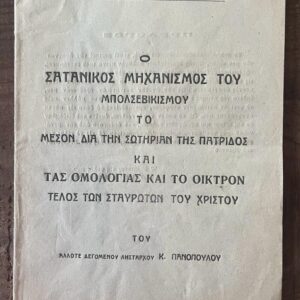Rare, 1921, Erich von Falkenhayn, Commandement Supreme de l’Armee Allemande, WWI
130.00€
Description
Erich von Falkenhayn
Le Commandement Supreme de l’Armee Allemande
1914-1916
et ses Decisions Essentielles
Traduction et Avertissement
Par le General de Division A. Niessel
Avec 12 cartes
Published by Charles-Lavauzelle Paris in 1921
Contemporary Leather Binding
233 Pages + 12 maps at the end of the book
Map 3 & 5 are loose leaves, map 7, 10 & 12 are attached to the book
The other 7 maps are folded and kept in the attached envelop
First French Edition
24 cm x 16 cm
About the book: The original German title is “Die Oberste Heeresleitung 1914–1916 in ihren wichtigsten Entschließungen“, published in 1919. The French edition (1921) was translated by General de Division Alexandre Niessel, a high-ranking French officer. It includes 12 maps, illustrating key strategic and tactical decisions made by Falkenhayn. The book discusses his leadership of the German Army High Command (Oberste Heeresleitung, OHL) and strategic decisions during the early years of World War I. It justifies his controversial decision to focus on the Western Front rather than support large-scale offensives on the Eastern Front. Additionally it details his famous (and ultimately failed) attrition strategy, aimed at “bleeding France white.” It also evaluates the situation in Russia, the Balkans, and the Ottoman Empire, including German involvement at Gallipoli. Finally it explains why he was replaced by Hindenburg and Ludendorff after the failures at Verdun and the Somme Offensive. The French translation shows how France interpreted German wartime strategy, particularly in light of its own suffering at Verdun. The inclusion of General Niessel’s commentary provides a French military perspective on Falkenhayn’s leadership and decisions.
Erich Georg Sebastian Anton von Falkenhayn (1861 – 1922) was a German general who was the second Chief of the German General Staff of the First World War from September 1914 until 29 August 1916. Falkenhayn replaced General Helmuth von Moltke the Younger after his invasion of France was stopped at the First Battle of the Marne and was in turn removed on 29 August 1916 after the failure of his offensive strategy in the west at the Battle of Verdun, the opening of the Battle of the Somme, the Brusilov Offensive and the Romanian entry into the war. Having planned to win the war before 1917, the German army was reduced to hanging on. Falkenhayn was given important field commands in Romania and Syria. His reputation as a war leader was attacked in Germany during and after the war, especially by the faction supporting Field Marshal Paul von Hindenburg. Falkenhayn held that Germany could not win the war by a decisive battle but would have to reach a compromise peace. His enemies said he lacked the resolve necessary to win a decisive victory. Falkenhayn’s relations with the Chancellor Theobald von Bethmann Hollweg were troubled and undercut Falkenhayn’s plans.
Additional information
| Languages | French |
|---|

